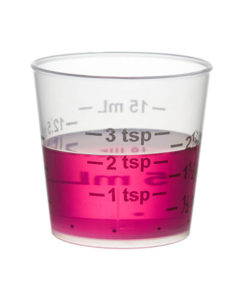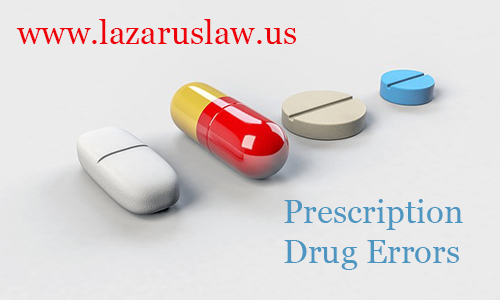 Imagine this scenario: Your child is sick and has a fever. You go to the store and purchase medicine recommended by the pharmacist, go home, and read the directions. The directions say to give 5 milliliters but the measuring cup is marked with lines that correspond to teaspoons. Could you possibly pour out 5 teaspoons and give that to your child? It’s possible, and mistakes like that are made every day which is why so many are hurt by both prescription and over-the-counter medications every day.
Imagine this scenario: Your child is sick and has a fever. You go to the store and purchase medicine recommended by the pharmacist, go home, and read the directions. The directions say to give 5 milliliters but the measuring cup is marked with lines that correspond to teaspoons. Could you possibly pour out 5 teaspoons and give that to your child? It’s possible, and mistakes like that are made every day which is why so many are hurt by both prescription and over-the-counter medications every day.
5 ml = 1.014 teaspoons so 5 teaspoons would be approximately 25 milliliters or 5 times what the proper dosage is.
This was in the news recently: One lot of Children’s Advil® Suspension, Bubble Gum Flavored Liquid bottles (4 fluid ounces) is being voluntarily recalled by Pfizer Consumer Healthcare, a division of Pfizer Inc. The recall was issued due to customer complaints that the dosage cup provided is marked in teaspoons, and the instructions on the label are described in milliliters, according to the FDA.
A pharmacy filling 250 prescriptions a day averages four mistakes according to National Observational Study of Prescription Dispensing Accuracy and Safety in 50 Pharmacies – Journal of the American Pharmaceutical Association. 48.3% of errors involved dispensing the wrong medication and 31.5% involved the wrong dosage.
Sometimes mistakes are made because of the thousands of different names assigned to different drugs, and many of them are similar. Sometimes mistakes happen because there are so many people involved in the chain that starts with a doctor or other healthcare worker writing a prescription, a pharmacy tech accepting the order and placing into a processing system, and a pharmacist dispensing the drugs. There is supposed to be a system of checks along the way, ending with a consultation when the medicine is picked up and paid for, but mistakes are made, like this one reported by www.pharmacytoday.org:
The technician made many errors transcribing the prescriptions. The most significant was confusing once-daily methotrexate for the metolazone that had been prescribed. The pharmacist approved the once-daily methotrexate, later explaining “for some reason I didn’t recognize the weekly versus daily. It didn’t click in my mind.” The pharmacy’s computer system did not flag the once-daily methotrexate dosing schedule.
The patient’s husband picked up the medication. He was asked if he had any questions, to which he replied no. No additional patient education was provided. The patient used the methotrexate daily as instructed on the label, and she died less than 1 month later from the effects of the drug.
A series of errors that could have and should have triggered a red flag and stopped the process and triggered a delay did not happen. As a patient, and we stress this constantly, you are ultimately the last defense against serious injuries from careless, negligent, or just over-worked healthcare professionals. It is crucial that you take the time to review each prescription you receive. Ask your doctor why you are being prescribed every medication. Ask for it’s intended outcome, how to pronounce the name of the drug, and ask about the dosage and directions. Ask for a consultation with the pharmacist when you pick up your medications and insist that everything is explained to you carefully.
Most pharmacies display a picture of what the medication should look like, so check to make sure you receive what you’re supposed to be getting.
Finally, if you think that you may have been the victim of an error by your doctor, your pharmacy or pharmacist, the drug company, or anyone else, we are here to help. We have been helping people hurt by pharmacy errors for over 25 years and we’re aware of how these problems usually happen. Call us at 954-356-0006 if you have questions.







Recent Comments